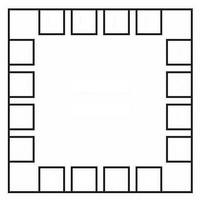LDS8869002-T2 Leadis Technology, LDS8869002-T2 Datasheet - Page 10

LDS8869002-T2
Manufacturer Part Number
LDS8869002-T2
Description
LED Drivers 6Ch Chrg Pump w/1.33 Mode, PL Curr Reg
Manufacturer
Leadis Technology
Datasheet
1.LDS8869002-T2.pdf
(14 pages)
Specifications of LDS8869002-T2
Number Of Segments
6
Operating Supply Voltage
2.7 V to 5.5 V
Maximum Supply Current
450 mA
Maximum Operating Temperature
+ 85 C
Mounting Style
SMD/SMT
Package / Case
TQFN EP
Minimum Operating Temperature
- 40 C
Lead Free Status / RoHS Status
Lead free / RoHS Compliant
LDS8869
selecting the register address and then programming
data into that register.
An internal counter records the number of falling
edges to identify the address and data. The address
is serially programmed adhering to low and high
duration time delays. One down pulse corresponds to
register
correspond to register 2 being selected and so on up
to register 6. t
100μ s. Any pulse with less than 200 ns width may be
ignored.
Once the final rising edge of the address pulse is
programmed, the user must wait at least 500μ s
before programming the first data pulse. Any falling
edge after this minimum delay will be recognised as a
first data pulse.
Data in a register is reset once it is selected by the
address pulses. If a register is selected but no data is
programmed, next pulse sequence will be recognized
as data only. Do not send register address only
without following data because it may disrupt normal
device operation.
Once the final rising edge of the data pulses is
programmed, the user must wait at least 1.5ms
before
programming fails or is interrupted, the user must
wait at least 2 ms (t
edge before reprogramming can commence.
Upon EN/SET pin goes high the device automatically
starts looking for an address. If no falling edge is
detected within 100μ s, then the user must wait at
least 2 ms before trying to program the device again.
The device requires a minimum 10μ s delay to ensure
the initialization of the internal logic at power-up. After
this time delay, EN/SET pin may be set high and the
device registers may be programmed adhering to the
timing constraints shown in Figure 1.
Register REG1 allows to set the mode and select the
pairs of LEDs to be turned on. A low LED current
mode exists to allow for very low current operation
under 4mA per channel. If IMODE equals 1, the high
current range is selected up to 32mA. If IMODE is set
to 0, all currents are divided by 8. Each bank of LEDs
(A, B or C) can be turned on independently by setting
the respective bit ENA, ENB, ENC to 1.
Register REG2 allows to set the same current for all
6 channels. REG3, REG4, REG5 allow to set the
current respectively in banks C, B and A. The three
banks can be programmed with independent current
values.
© 2008 Leadis Technology
Characteristics subject to change without notice
1 being selected. Two down pulses
programming
LO
and t
RESETDELAY
HI
must be within 200ns to
another
) from the last rising
address.
If
10
REG6 contains the return lockout (RTLKO) bit. This
stops the charge pump returning to 1x mode. One
pulse sets it to 1. Two pulses set RTLKO to 0. When
RTLKO is set to 1, the charge pump cannot
automatically return to 1x mode when in one of the
charge pump modes. The device can however move
from 1x to 1.33x, or to 1.5x and 2x if the input voltage
is not sufficient to drive the programmed LED
currents.
REG6 also triggers a charge pump. This forces the
charge pump to start from 1x mode and determine
the correct mode it should be in to drive the LEDs
most efficiently. If the input voltage has risen or the
device has been reprogrammed to other LED values,
it is recommended to trigger this reset allowing the
charge pump to run in the most efficient mode.
To power-down the device and turn-off all current
sources, the EN/SET input should be low for at least
1.5ms (t
down with a delay of about 1ms. All register data are
cleared.
Unused LED Channels
For applications with only four or two LEDs, unused
LED banks can be disabled via the enable register
internally and left to float or connect to Vout.
For applications requiring 1, 3, or 5 channels, the
unused LED pins should be tied to V
3). If LED pin voltage is within 1 V of V
channel is switched off and a 250 μ A test current is
placed in the channel to sense when the channel
moves below V
Protection Modes
The LDS8869 has follow protection modes:
1. LED short to V
If LED pin is shorted to V
becomes as short circuit, or LED pin voltage is within
from V
Figure 3. Application circuit with 5 LEDs
OUT
OFF
) or longer. The driver typically powers-
to (V
OUT
OUT
– 1.5 V.
OUT
protection
-
1.5V) range, LDS8869
Doc. No. 8869_DS, Rev. 2.1
OUT
, LED burned out
OUT
OUT
(see Figure
, then the













